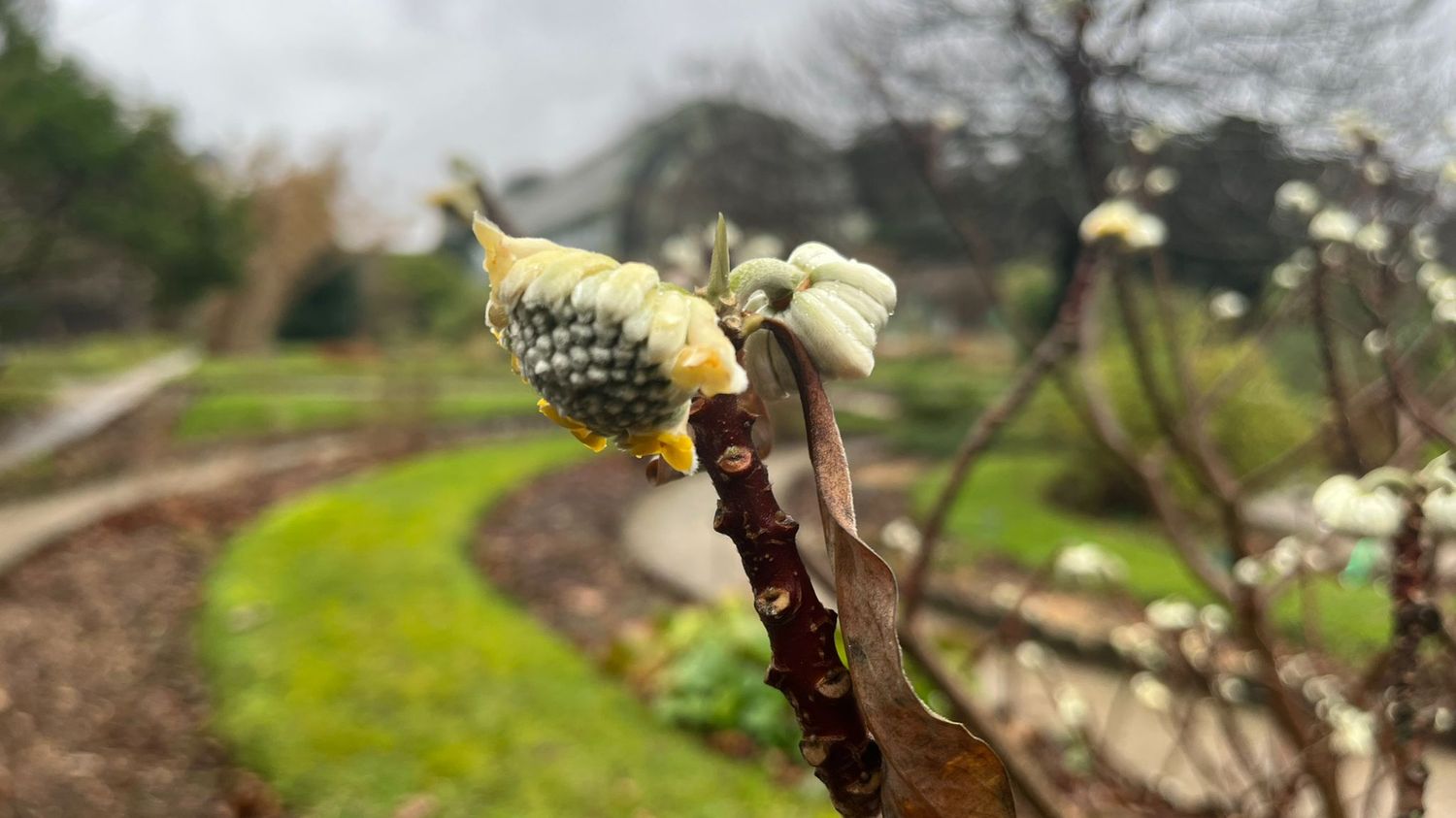The phenomenon, due to the mild temperatures of this winter, disrupts the plants and risks weakening them in the long term.
Published
Reading time: 2 min

In the garden of the botanical school of the National Museum of Natural History, in Paris, there are many examples of early budding at the beginning of January. But there is one that is particularly striking, that of the litodora. “The whole soft green part, these are the new shoots of the year which are already starting to be well formed”, explains Olivier Poustomis, gardener at the school of botany. Usually the buds of this plant do not open until March. This is the first year that I’ve really seen a flower at the beginning of January.”
A few dozen meters further on, this time we stop in front of a shrub called the paper bush. “It’s going to make some really, really weird kind of flowers that go downward.” The observation is the same for this species: “Some flowers are already open, notes Olivier Poustomis. So there, it’s still quite early since usually, it flowers in a month, a month and a half.”

A situation that concerns gardener Olivier Poustomis. His main fear, which is likely to be confirmed, is an episode of frost which would occur during the winter. “All the flowers, all the buds could be burned. As a result, they would not bloom this year.”
Plants not adapted to the milder climate
If the buds of certain plants are already opening, it is because of the mild weather of the last few weeks. “The buds come out early, just as you go out without a hood, collar or coat, because it is mild, recalls Marc André Selosse, botanist and professor at the Natural History Museum. The climate has milder winters, so there are plants that will start thinking it’s spring. There are also plants that have had a hard time stopping. A few months ago, I saw a plant of tomatoes that had reflowered. He had forgotten that it was winter and he was making fruit.”

“The idea is that the climate changes and the plants return somewhat loosely, in climates that their ancestors did not know and therefore to which they cannot be adapted,” he adds.
With the mildness of the last days, the botanist raises another consequence: “Certain plants need the cold of winter to be able to feel spring afterwards and get going. These plants may have more difficulty forming their flowers and forming their buds in spring. So it is not not irremediable but if it repeats itself from year to year, these are things that risk weakening them.” This is particularly the case for ornamental cherry trees, very famous in Japan.
